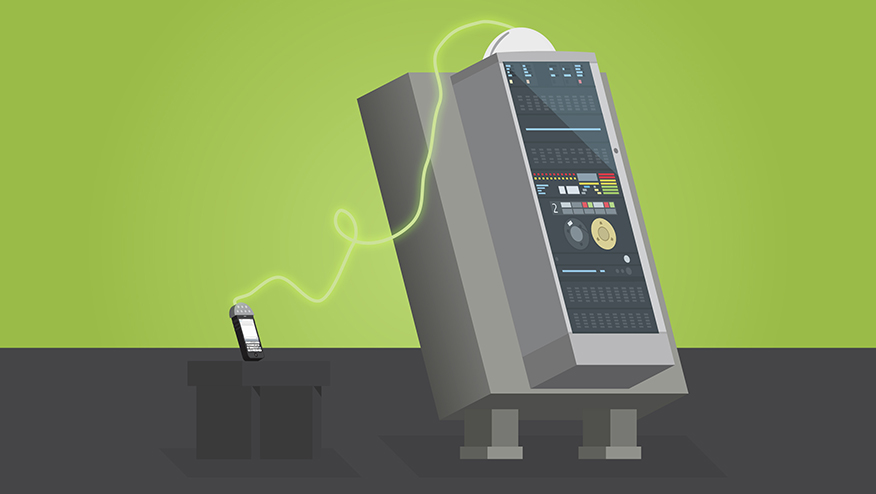Blog: Fast-Forward to the Next Generation of B2B Gateway Technology

In the world of business-to-business integration, generations of products don’t really evolve as much as they accumulate. There comes a time when every organization must assess whether its collection of legacy solutions still provide benefit, or are just in the way. Technology can hold up well for its original purpose, but is it a singular benefit? Could your B2B integration platform be doing more to enable business success?
The simple answer might be yes, but these legacy products often need some coddling in the form of added functionality and girth. This old technology has lasted long enough that business needs (cloud integration, file sharing, new security mandates, etc.) have changed, and typically the first instinct is to make your old technology work harder to meet these needs, perhaps through added scripting and customization.
The question becomes: Can an IT department justify a recommendation to retrofit critical B2B technology, in a square-peg-in-a-round-hole way? Many try. But ultimately, we’re still attempting to “fit” something onto or into something else to extract functions and capabilities that are fundamentally missing. On the other hand, implementing a modernized, single-platform B2B software infrastructure provides multiple benefits and moves businesses into the future.
Down Memory Lane
Remember the DVD/VCR combo? (If you still have one, you’re in denial.) That’s an example of retrofitting current movie-watching technology with previous generations of movie-watching technology. It was a good idea for a while, mainly because it allowed us to keep our status quo and dabble in newer technology. But the DVD/VCR combo:
- Was a futile attempt to hold onto something we as consumers had already invested a lot of money in – VHS tapes.
- Resulted in additional consumer spends on the same films (the favorites we just can’t do without!) in this new DVD format.
- Developed around the time of Napster and file sharing over the Internet, with digital music libraries growing and the writing on the wall for CDs and other hardware.
Now, all of these formats – VHS, Laserdisc, CD, DVD, Blu-Ray – have been rendered obsolete with instant digital access to any song, TV episode, series, and movie at our literal fingertips (and no rewinding!). This hybrid DVD/VCR technology served its transitional purpose and isn’t one to rely on for the long term.
Thus, if technology teaches us one thing, it’s that staying a step ahead becomes harder as “next generation” solutions are developed. But understanding legacy solutions and their limitations can help facilitate the next generation of data integration technology.
The Next-Generation B2B Gateway
So what does it mean to be a “next generation” B2B gateway technology? The definition will change from vendor to vendor, but one has been leading the way on B2B data integration for decades and has collected massive amounts of input on this.
After analyzing data integration trends and weighing the functionality businesses need to meet B2B integration and contemporary information management requirements, we came up with numerous key characteristics that will take your B2B gateway solution and your business well into the future. Here’s just one:
Collaborative community management with file sharing, self-service, audit, and citizen integration
New technology, especially in the cloud, blurs the lines between traditional data integration and human interaction, and customized dynamic interaction between content and people must occur at most stages. But that also means each process must meet the appropriate industry and regulatory mandates, which legacy B2B integration solutions struggle to maintain.
A modern B2B gateway will:
- “Find the human”: Incorporate the interactive engagement facilities in the platform that relate to the management and governance of even automated data flows:
- Onboarding
- Reporting/dashboarding
- SLA/monitoring
- Troubleshooting
- Task-management “workflow” capabilities, including:
- Approval cycles
- Routine maintenance (certificates, passwords)
- Periodic reports
- Enable dynamic participation in “case management” scenarios requiring assistance (e.g., onboarding, troubleshooting, continuous improvement).
- Provide an audit trail of all “governance” transactions, separate from data flow transactions, including before/after/approval metadata.
Follow the traditional uses cases supported by legacy B2B integration solutions and you’ll find a plethora of adjacent use cases involving both team-member-to-team-member interactions and team-member-to-system interactions. Why not support those interactions on the same B2B gateway platform?
Sometimes those team members span company boundaries and need to execute workflow on the transactions that the B2B gateway is handling. Oftentimes, business people need to collaborate to better understand and make data-driven decisions based on the traffic that the B2B integration platform is handling. This may be to audit more quickly, manage trading partner relationships better, establish alerts and escalations based on specifics of each trading partner relationship, and much more.
The Right B2B Gateway
Your next B2B integration platform should handle the adjacent use cases that are connected to B2B system-to-system integration to enable people, applications, and systems to more efficiently and intelligently work and collaborate together. Your legacy B2B gateway solution may merely handle specific types of data that are flowing to and from certain trading partners.
The power organizations will derive from implementing next-generation B2B gateway technologylies in their ability to optimize data movement, data intelligence, and data-initiated action. Let’s understand our future data strategy requirements so we can best decide on how to align modern IT and business initiatives without trying to retrofit technology of the past.

About Cleo

Watch a Demo

Comprehensive Guide to Gaining B2B Control

Duraflame Case Study
